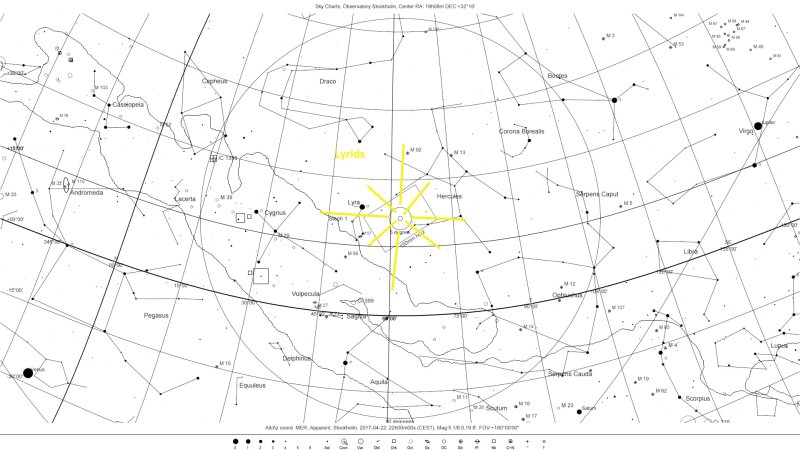 (Click on the map and get a full resolution map in a new window)
(Click on the map and get a full resolution map in a new window)
When I plan to take photos of astronomical objects I often take help of the Skychart program.
From there I can draw correct star maps from my place and with correct time.
Skychart is free to download, you find it here:
|
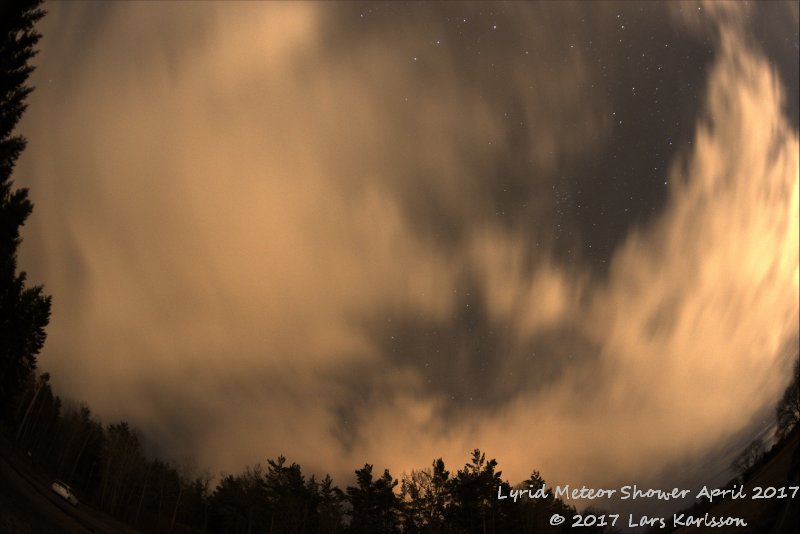
We started our cameras about 23:30 local time, we live at Sweden and the local time is UT + 2 hours (CEST) when in summer season.
As you see, clouds, we are very used to it!
|
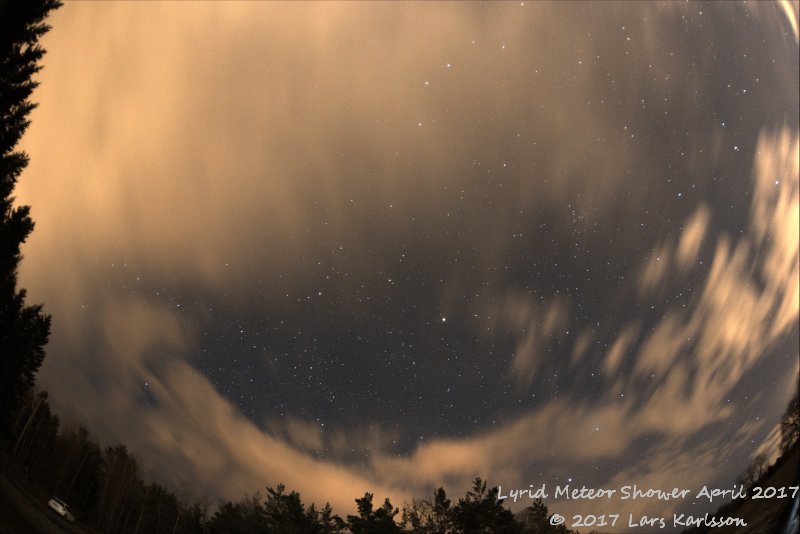
Now 40 minutes later we got signs that the clouds break up.
|
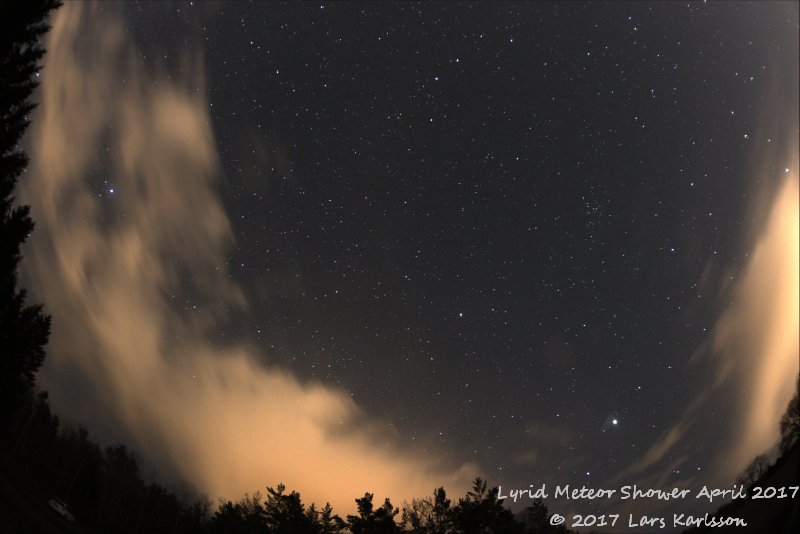
Almost a clear sky, we could visually see satellites and meteors, some very bright. But still no bright one on photo.
The bright object down right is our solar systems biggest planet Jupiter.
|
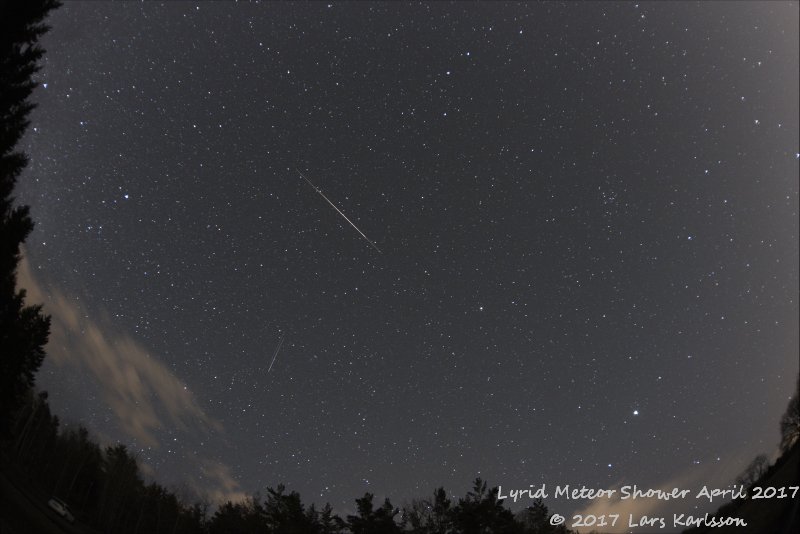
Afterwards
when home I could only find one bright object on mine photos. It's the upper bright line.
The lower two are satellites. Total number of photos was about 140. Later research and with help of friends give
the information that this was not a Lyrid meteor,
it has the wrong direction to be that. And after some investigating I now think it's a satellite, a very bright one.
|
| Coordinates/Direction : | Lyra constellation to the left |
| Object size : | all sky |
| Object magnitude : | |
| Object : | targetting for the Lyrid Meteor Shower |
| Date : | 2017-04-22 |
| Time (UT) : | 22:35:25 |
| Mount : | Tripod |
| Guide : | - |
| Lens/telescope : | Zenitar fisheye 16mm, f/2.8 (set to f4.0) |
| Corrector/Barlow : | - |
| Filter : | none |
| camera : | Canon 6D, controlled by an intervalo meter |
| Film/CCD : | Raw and jpg |
| Exp. time : | One photo used of 140 photos of 30 seconds each, 5 seconds pause between each, iso1600 |
| Image process tool : | Fitswork |
| Processing : | Dark calibration, dithering technic is of no use in this case |
| Weather : | clouds in beginning and later a clear sky |
| Comment : |
My wish was to catch a lot of Lyrid meteors, better luck next time. |
| More to know : |
Wikipedia:
https://en.wikipedia.org/ wiki/ Lyrids |
Crop image of meteor:
|
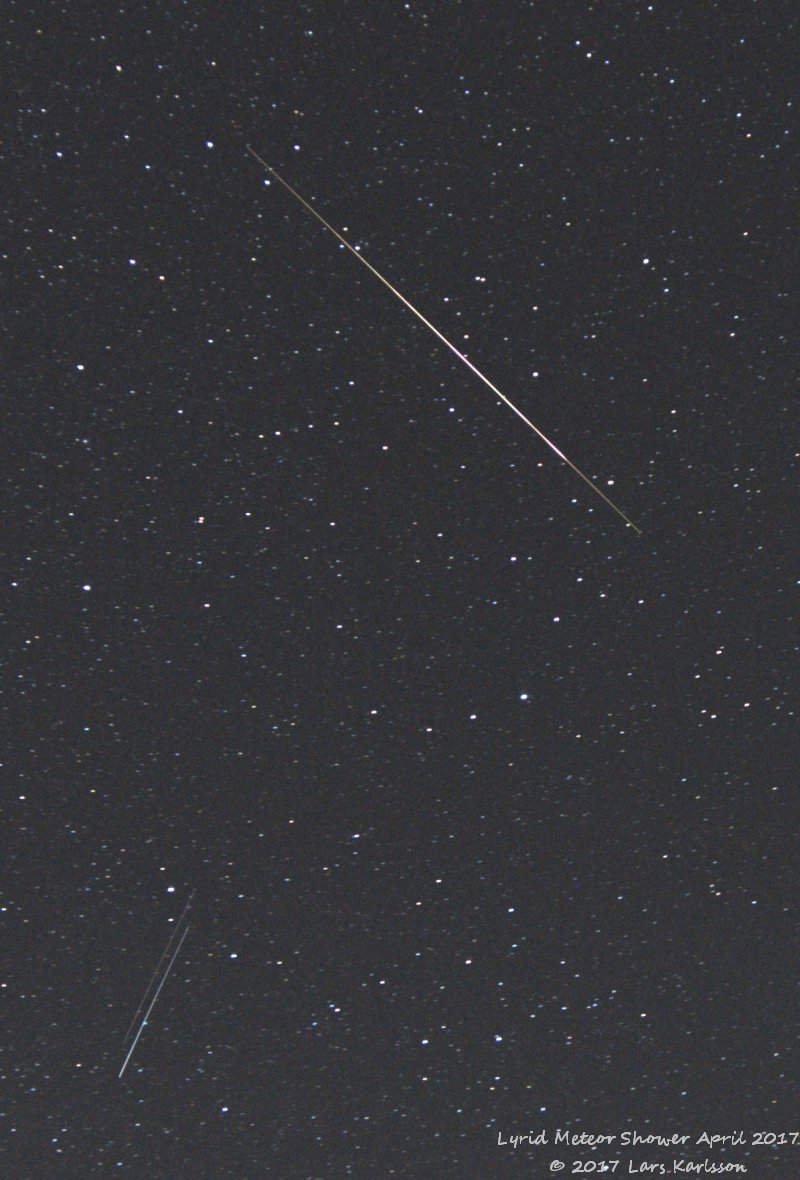
You can here see how the brightness of the object varies along the track.
A bright meteor can end with a bright flash. But also rotating satellites can give these light patterns.
Down left, the two satellites are NOSS 3-6 (A) and (P) has my friend Björn Gimle told me.
|
Crop image of bright object:
|
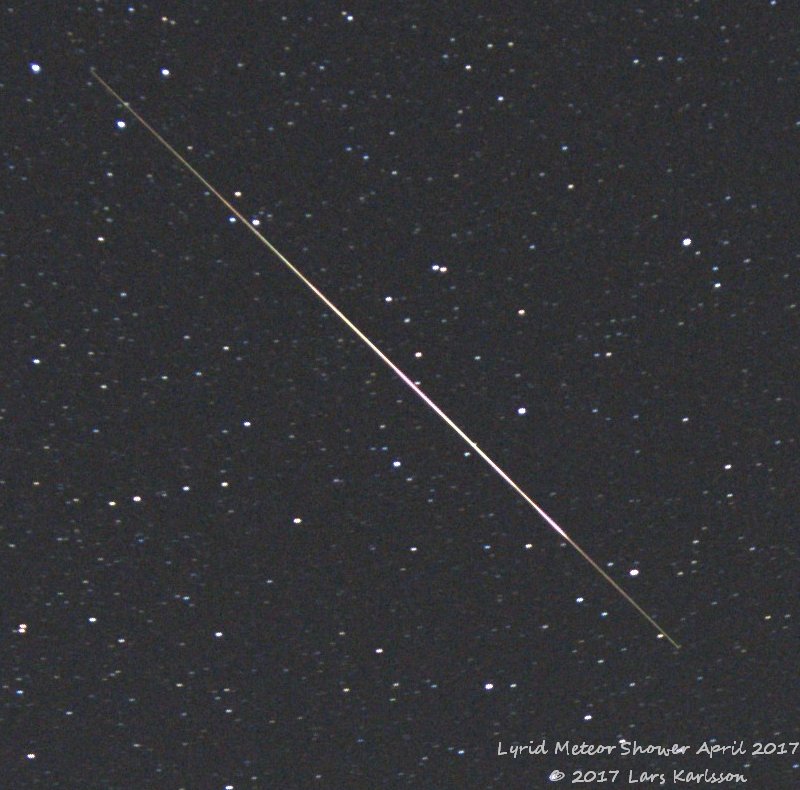
An even more close up of the object, now I think this is a rotating stellite.
Hans Bengtsson has provided a link about comet showers with deeper information for you who wants more, Lyrids on page 7:
|
| Date : | 2017-04-22 |
| Time (UT) : | 22:44:09 |
| Comment : |
Ten minutes later this dropped in.
There was nothing on the photos before ore after so it should not be a satellite.
It's very close to the horizon and it's hard to tell, cosmic ray or a meteor but not a Lyrid meteor.
The size of a meteor of this kind is just a few mm,
it's the high speed, about 10 to 30 kilometer per second that make it light up so bright when it enter our atmosphere, friction!
|
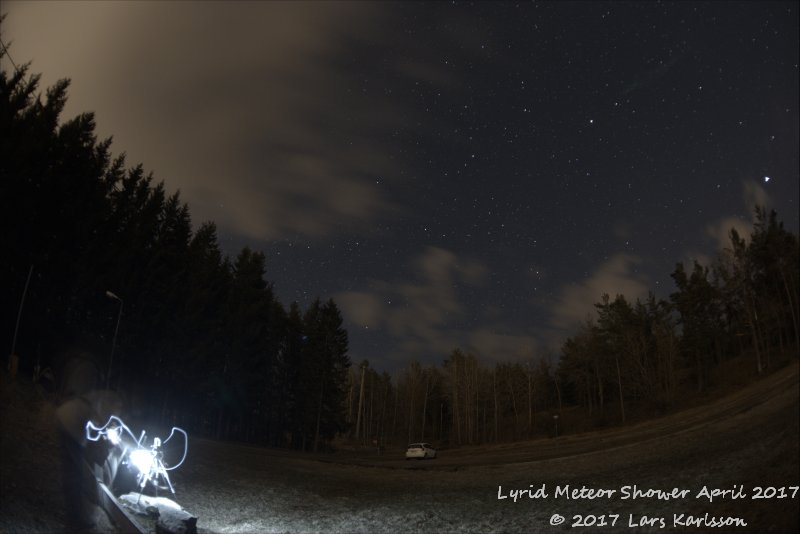
 (Click on the map and get a full resolution map in a new window)
(Click on the map and get a full resolution map in a new window)






